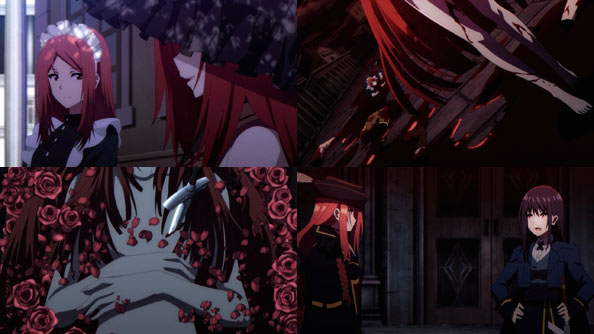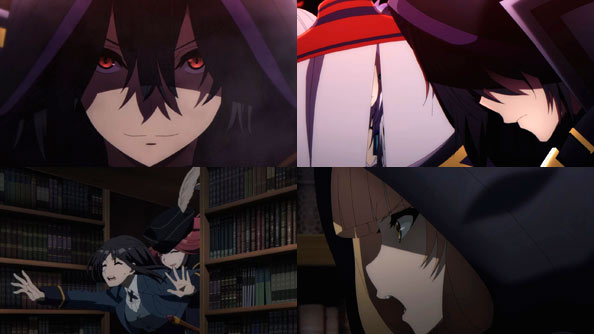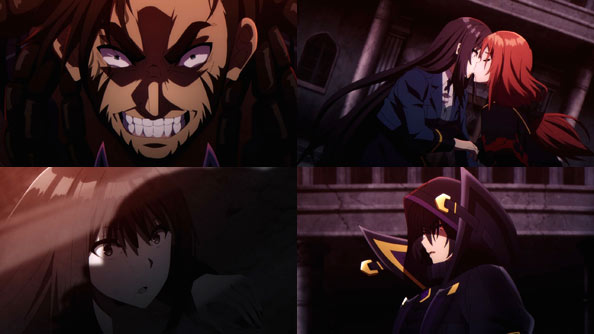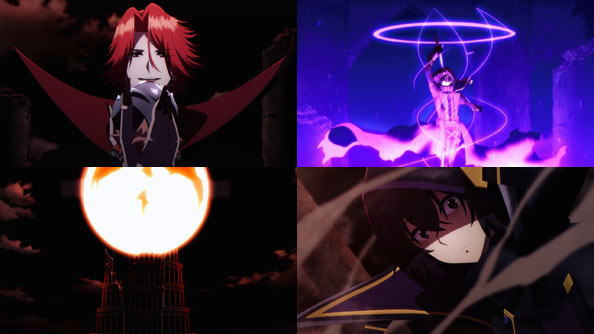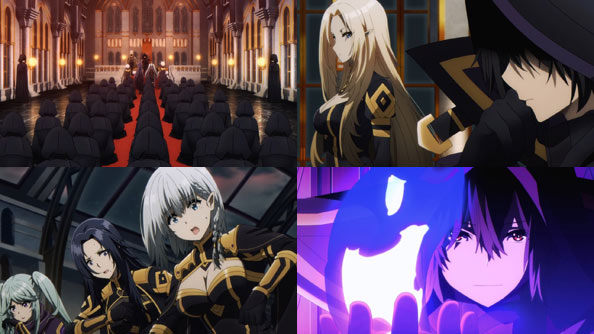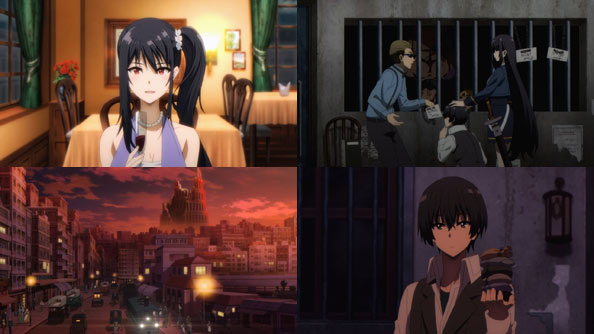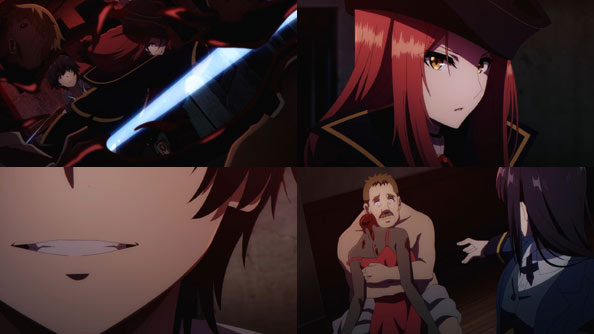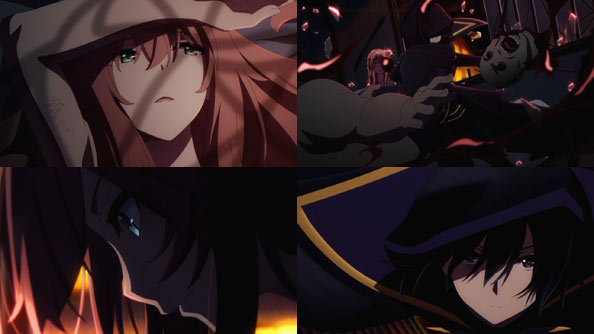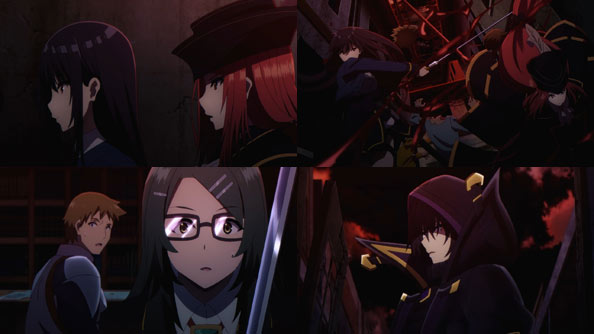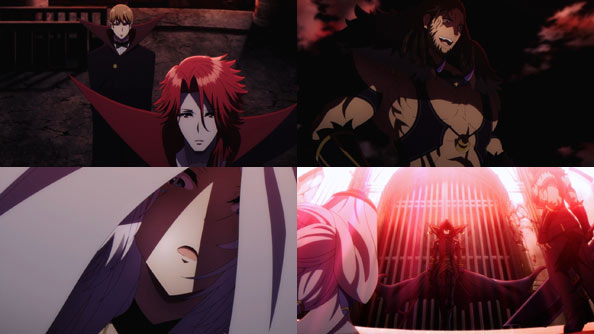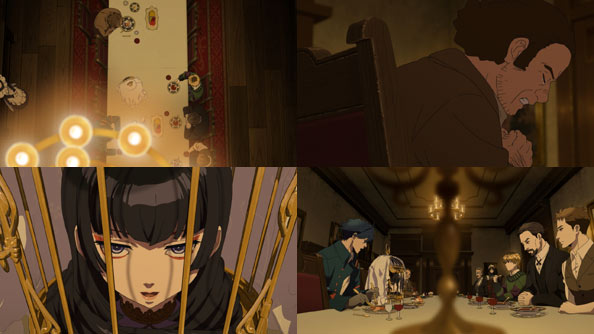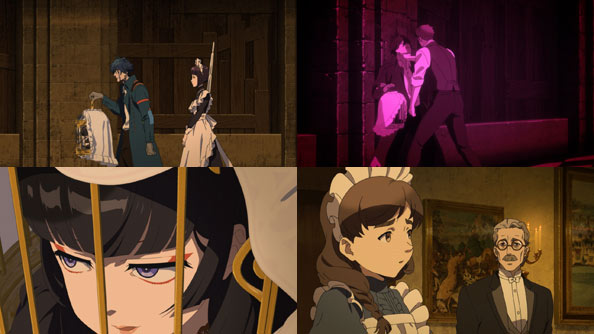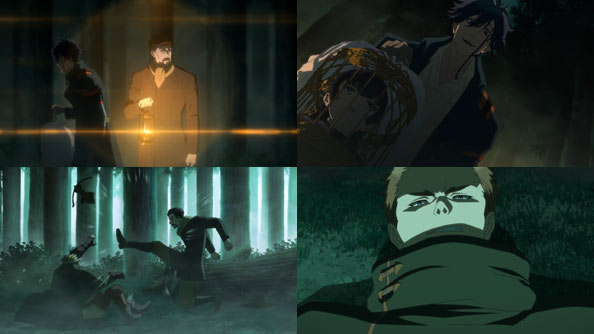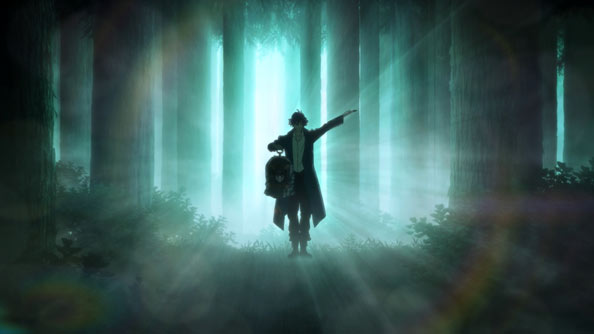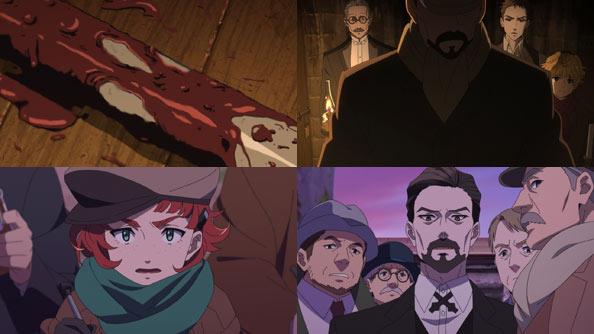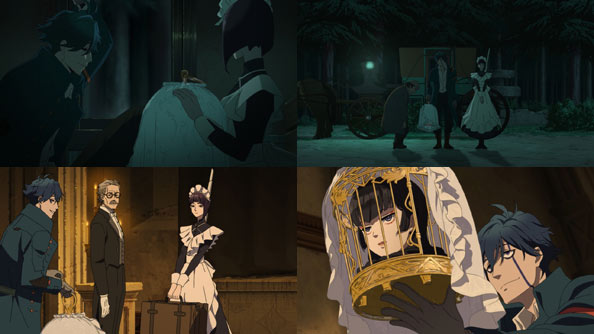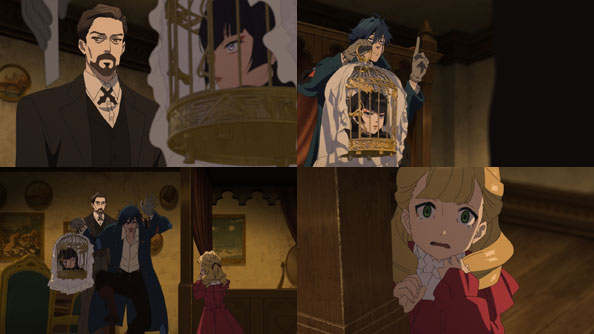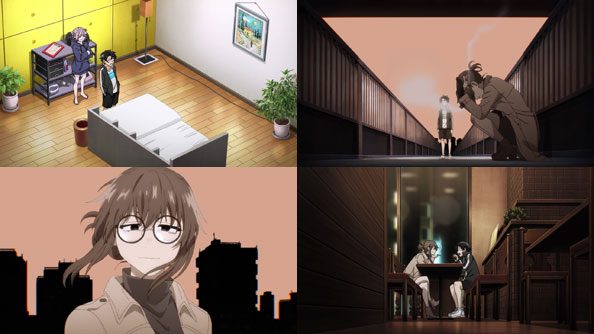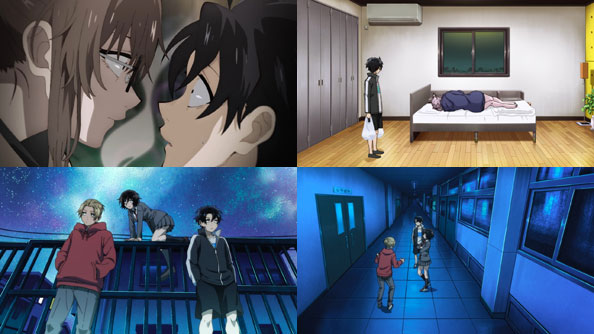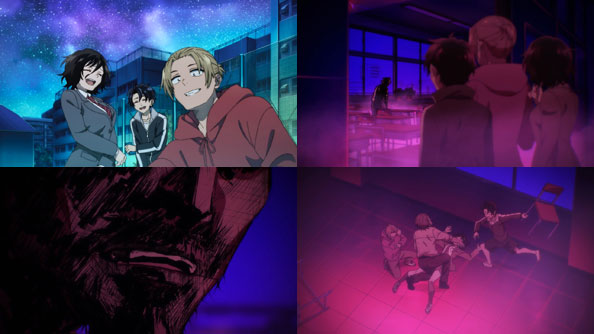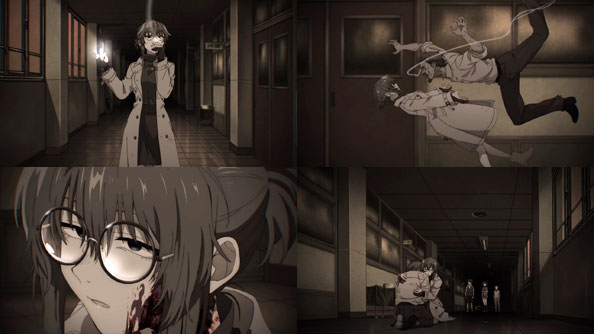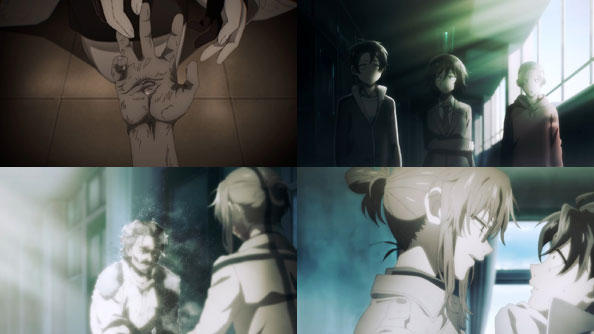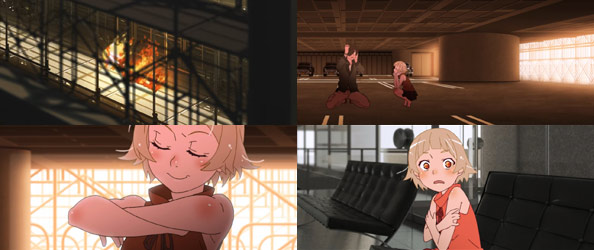
Just because Araragi Koyomi is a vampire doesn’t mean he has the slightest idea what he’s doing, so in preparation for his fight with Dramaturgy—a fellow vampire, and vampire hunter—he bones up on both Aikido and baseball.
One thing Koyomi knows for sure is that the battle, and indeed his presence in general, is no place for a human, in particular the lovely Hanekawa Tsubasa, who shows up at the place where he’s to fight.
Koyomi decides to get rid of her—for her own sake—in the most expeditious way possible: by cruelly deleting her contact on his phone, demanding she stop following him, and basically telling her to piss off.

Dramaturgy is a kick-ass name for a vampire hunter, and Dramaturgy himself is terrifying to behold in his sheer size, speed, and purposefulness. Koyomi tries an Aikido approach, and loses his left arm in the first blow. Ovetaken by pain and horror, he runs away screaming.
But he forgets himself, quite literally: as the subordinate of Heart-Under-Blade, he can instantly regenerate his limbs, and so does so, then switches to a baseball approach until he beans Dramaturgy straight in the eye with some cheese.
To Koyomi’s shock, this is enough to get Drama to concede their duel and surrender Kiss-Shot’s leg. After all, he’s just a regular vampire, not of her lineage; he can’t regenerate nearly as quickly as she, and by extension Koyomi. The moment Koyomi figured that out, he’d lost.

In the immediate aftermath of his fist victory, Tsubasa emerges from her hiding spot; she’d watched the entire battle and wants to know what the hell just happened. Koyomi starts off with his ‘none of your business’ business, continuing to say mean things he doesn’t mean, even telling Tsubasa he only cared about her body, and asking her to show him her panties again.
But Tsubasa does show him her panties, because it’s what she wants to do, and knows that the Koyomi she knows wouldn’t have said such hurtful things unless he was trying to protect her. He sees right through his mean guy act, and the real Koyomi emerges, contrite and appreciative of her friendship.

Back at the cram school, Kiss-Shot is presented with her leg, and devours it, much to Koyomi’s shock. While she digests, Koyomi and Oshino give her some privacy, during which time Oshino explains how by methodically taking her limbs, her three (now two) hunters also managed to take her vampirism and all the abilities it entails.
Koyomi isn’t 100% trusting that Kiss-Shot will fulfill her end of the bargain by making him human again, and Oshino rightfully calls him an ingrate for it. If you can’t trust the person you saved your life, who can you trust?
When he goes back inside, he finds that Kiss-Shot has morphed from a young girl to a teenager. Somewhat creeped out by his reactions, she hides behind the lectern and sticks out her tongue at him.

Koyomi’s next opponent is Episode, a half-vampire filled with hate for his vampire side because it keeps him from truly fitting into either the vampire or human worlds. But before that, Koyomi introduces Tsubasa to (a soundly dozing) Kiss-Shot, thus sating her curiosity.
Tsubasa blames herself for somehow summoning vampires by simply bringing them up in conversation, and laments she can’t do more to help her friend, but Koyomi assures her that bringing him fresh clothes and moral support is more than enough.
Tsubasa also gets a measure of revenge by caressing Koyomi’s shirtless, suddenly much-more-built (as a result of his vampirism) body, which turns her on enough to make her a little uncomfortable when he gets too close to thank her. Still, before departing, she promises she’ll continue to support him in any way she can.

As with Dramaturgy, Koyomi’s battle with Episode doesn’t start out so well for him, as Episode is able to teleport from place to place in a blink of an eye, making him hard to target, not to mention his massive cross which he heaves at Koyomi like a projectile.
Tsubasa appears to help Koyomi out with a vital tip—Episode is turning himself into fog—but gets caught in the cross-er-cross, and she gets a nasty disembowling wound to her side, a most gutwrenching and upsetting sight to behold, for both me and Koyomi.

Seeing her urge Koyomi to keep fighting even as she bleeds out motivates him to stop going easy on Episode, and he flies to a nearby stadium to kick up a tremendous amount of dust in order to scatter the fog, which is only water, after all.
Once he has Episode in his clutches, he recalls flashes of holding the dying Tsubasa in his hands, and those hands tighten around Episode’s throat. He’d have killed him if not for Oshino stepping in to stop him, warning that he’ll “lose his humanity” if he carried out the execution.

Oshino also extracts an extra fee of three million yen in exchange for the key to saving Tsubasa, which Koyomi could have figured out for himself but for the fact he’s panicking—he cuts himself open and pours his vampire blood all over her, and she is immediately healed and wakes up.
Koyomi is so happy to see her alive and okay, he foregoes bashfulness regarding her torn uniform and cuddles with her a little longer. Kiss-Shot gets her other leg back, and upon re-absorbing it, morphs into a young adult, having very nearly recovered her immortality, but still unable to use any vampire abilities.

Last up, Guillotinecutter: neither a vampire nor a half-vampire, he’s merely a human, if a particularly well-built human. Rather than professionalism or hatred, he fights for faith, and his ability to exorcise vampires means Koyomi will have to be both extra-careful and extra-ruthless. In fact, Kiss-Shot suggests the only way to beat him is for Koyomi to abandon the humanity to which he’s been trying so hard to cling.
Before this third and final fight, Koyomi meets with Tsubasa once more, this time in the wheat(?) fields that surround the cram school. She provides sandwiches, (which he doesn’t eat since he’s a vampire) Coca-Cola (with a refreshing taste even vampires can’t refuse), and more moral suppport.
Koyomi tells her once more to stay away from him for her own safety, especially now. When she got hurt, he thinks it hurt him more than if it were him getting hurt. He’s recoving Kiss-Shot’s limbs so she’ll restore him to being a human, but he won’t sacrifice Tsubasa for that goal, and thinks Tsubasa is being too selfless, too bright for the likes of him.
Tsubasa reiterates that she’s not doing what’s good or right, but what she wants to do, no more, no less. Indeed, she sees herself as being selfish, self-centered, deceitful and stubborn, but she won’t apologize for any of it. But if there’s nothing more she can do for him regarding his current mission, she’s willing to step back.
To that, Koyomi tells her there is one more thing she can do: Wait for him. Wait until after Spring Break when they’re back in school, and be someone he can have fun talking with again. Koyomi says this romantically enough to literally make Tsubasa surrender her panties, with the implied promise that he’ll give them back when next they meet.
Koyomi, being pervy, isn’t super-committal about that last part, but he does want to see her again, so he’ll likely give them up when the time comes. With that, they part ways.

Unfortunately, when he faces Guillotinecutter, the priest immediately takes Tsubasa hostage and threatens to kill her if Koyomi challenges him. Tsubasa, of course, urges Koyomi to carry out his mission and not to worry about her, but there’s no way he can’t.
But as Kiss-Shot said, the only way Koyomi can defeat Guillotinecutter without killing Tsubasa is by going further than he went in his battles with Episode and Dramaturgy; beyond the point where Oshino stopped him. He has to be utterly inhuman in his strength, speed, and ability.
And so he does: Transforming his arms into vine-like tree limbs, he plucks Tsubasa from Guillotinecutter and crucifies him. Tsubasa is safe in those tree-like arms, and Kiss-Shot’s arms would seem to be free…but can Araragi Koyomi, Human recover from what he had to do? It’s left to the third and final film to decide.

